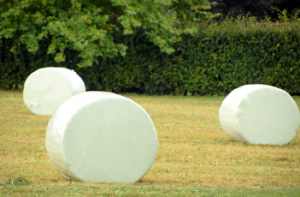SiloPower is an ultra-thin, seven-layer film that can be applied to silage bales. These wraps are designed to prevent air from getting in, making them a good choice for storing forages. In addition, they are UV-resistant, so that you can use them year after year without worry. The film can be purchased from a specialist dealer. This product can help farmers make the most of their investment in silage wrapping.
 The silage wrap has six layers designed to protect the hay from moisture and sunlight. The plastic’s unique design makes it ideal for storing feed. The film protects the feed from microbial growth, preventing mould development. Moreover, silage wrap is waterproof and can be reused again. In addition, it can be used for dry feed, but it should be wrapped with double the usual number of layers. Check www.unipak.com.au/silage-wrap.
The silage wrap has six layers designed to protect the hay from moisture and sunlight. The plastic’s unique design makes it ideal for storing feed. The film protects the feed from microbial growth, preventing mould development. Moreover, silage wrap is waterproof and can be reused again. In addition, it can be used for dry feed, but it should be wrapped with double the usual number of layers. Check www.unipak.com.au/silage-wrap.
In addition to the six layers of cover, the silage wrap should be placed on a solid base. The ground should be free of plants, as stubble can cause holes in the plastic. Once wrapped, the bales should be stored on the gravel to avoid getting harmed by the wind. A seasoned silage wrap can also protect against UV radiation. But be careful: UV radiation can break down the plastic and reduce the quality of the feed.
The ground beneath the bales should be free of plants, bushes, or other debris. It will prevent moisture from permeating the plastic and prevent mould growth. To prevent this:
- Use silage wrap on a gravel surface and wash it before storing.
- After storing the bales, place them on the gravel to reduce the risk of leakage.
- In addition, use the net wrap on the bales to contain stems and decrease the risk of the stalks poking holes in the film.
If you’re wrapping hay, you should carefully measure the dry matter content of the bales. Ideally, silage wraps should contain between 30 and 50 per cent dry matter. Unlike hay, silage wraps can be damaged by UV-rays and should be stored on a level of gravel. This type of soil is a suitable substrate for wrapping silage. You should also ensure that the soil is dry and free of any plants.
The film used to cover the bales should have multiple layers to prevent condensation from forming inside the bales. The film should be matched to the temperature range to minimise the chances of mould forming on the fodder. Moreover, the film should be protected from ultraviolet radiation as it will cause the film to crack or degrade. The more layers the film is, the more protective it is. So, if you’re buying a silage wrap, it’s best to buy a high-quality product with a high warranty period.
A silage wrap should be disposed of responsibly. First, it should be burnt in a fire to reduce the risk of airborne emissions. The residue of silage wrap must be disposed of in a landfill. Otherwise, it may be contaminated and pose a threat to livestock. If it is not properly disposed of, it may even kill stock. If you’re unsure of how to dispose of the film, it’s best to consult your veterinarian.
In addition to the benefits mentioned above, silage wrap is beneficial in smaller fields, overflow fields, and difficult terrain. However, the main disadvantages of this type of wrap are that older forages can poke through the silage wrapper. If this happens, oxygen can penetrate the silage, affecting the quality of the feed. In addition, if the hay is not sealed, it will not keep them dry matter and nutrients. Instead, it will lose nutrients.
Choosing the right type of silage wrap is crucial to a successful harvest. The best type should protect the bales from UV radiation. In addition, the film should be thick enough to prevent the bales from bursting. If the film is not thick enough, the bales may become too moist, which can lead to the growth of harmful organisms. The plastic will also quickly deteriorate if left unwrapped for too long.